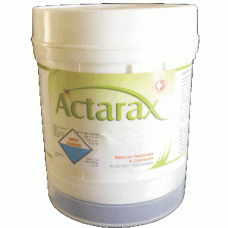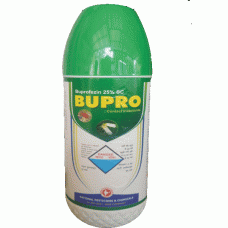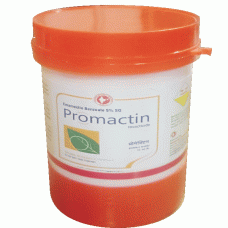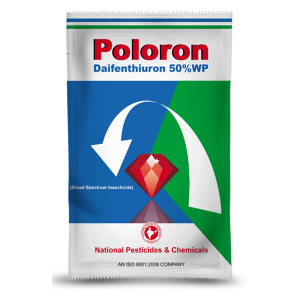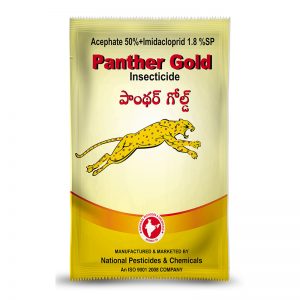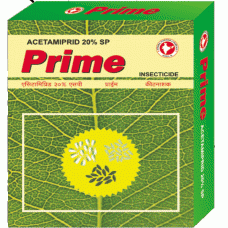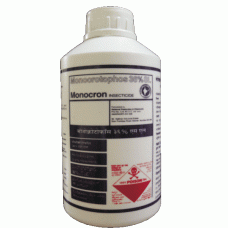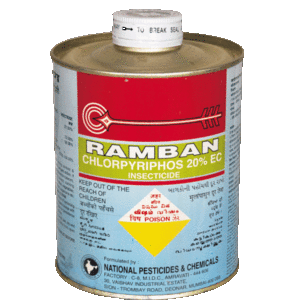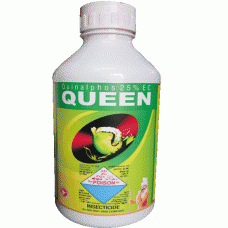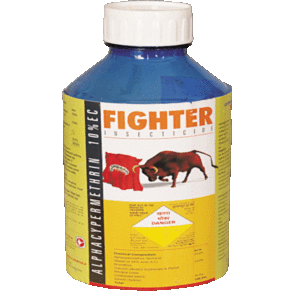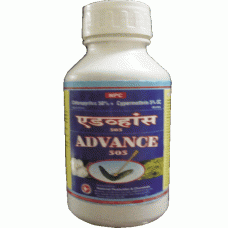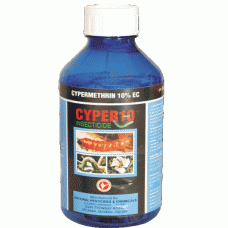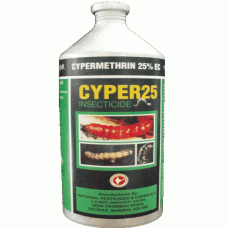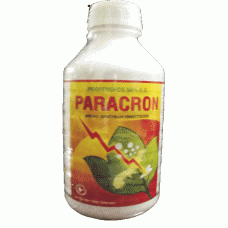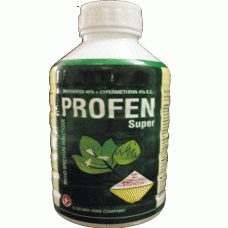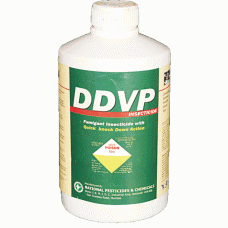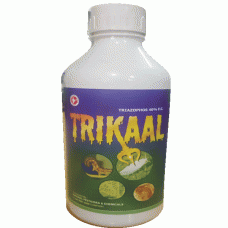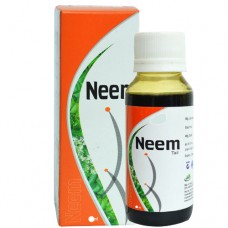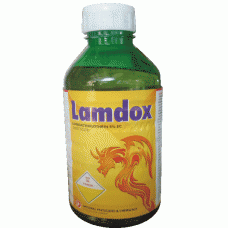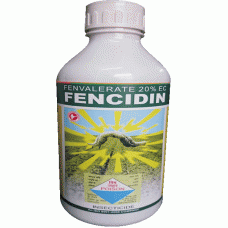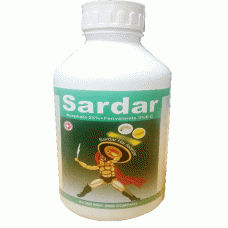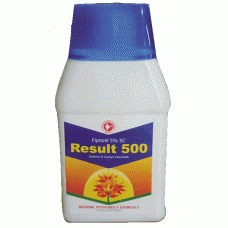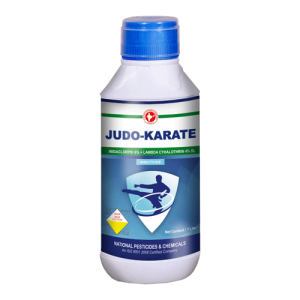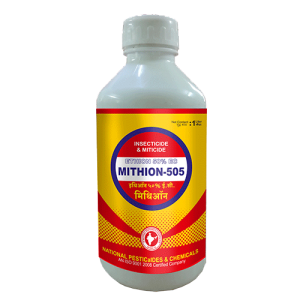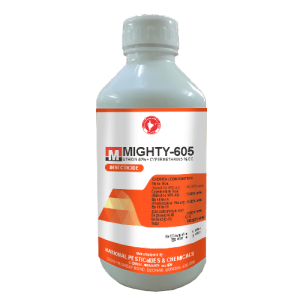Chlorpyriphos 16% + Alphamethrin 1% EC
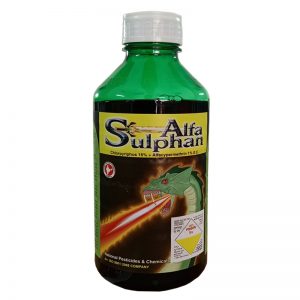
Applications:
Biochemistry Cholinesterase inhibitor. Mode of action Non-systemic insecticide with contact, stomach, and respiratory action. Uses Control of Coleoptera, Diptera, Homoptera and Lepidoptera in soil or on foliage in over 100 crops, including pome fruit, stone fruit, citrus fruit, nut crops, strawberries, figs, bananas, vines, vegetables, potatoes, beet, tobacco, soya beans, sunflowers, sweet potatoes, peanuts, rice, cotton, alfalfa, cereals, maize, sorghum, asparagus, glasshouse and outdoor ornamentals, turf, and in forestry. Also used for control of household pests (Blattellidae, Muscidae, Isoptera), mosquitoes (larvae and adults) and in animal houses.
Actrex is thiamethoxam 25% WDG
Applications:
It is a broad spectrum systemic insecticides which has quick stomach as well contact activity. Offered product is recommended for applications to control gall midge, stem borer, leaf folder, white backed plant hopper and brown plant Hopper in rice and jassid, aphid and white flies in vegetables, cotton and Mustard. Owing to its high effectiveness, it is also used to control bugs in the tea plantation.
Salient Features of Thiamethoxam 25% WG :
- Biodegradable in nature, hence safe for environment
- Easy to transport
- Very easy to use
- Has quick stomach as well as contact action
- Effective for broad range of insect as well as for various crops
Specifications:
Contains Thiamethoxam 25% as active ingredient
Buprofenzin 25% SC
Applications:
Buprofezin 25% SC an insecticide, is effective in controlling rice from damaging plant hoppers.
Bupro , insecticide is an insect control agent that contains Buprofezin as an active ingredient. When sprayed in the beginning of the occurrence of brown plant hopper (BPH), it stops BPH growth in its tracks. Hoppers may live for 3-5 days but they cannot damage the crop. Bupro also controls green leaf hoppers and white back plant hoppers effectively.
Bupro , insecticide inhibits moulting of nympths and larvae, leading the rice pests to death. It also suppresses oviposition by adult pests and forces the treated insects to lay sterile eggs, hence preventing the rice pests to multiply.
Chemical Name:
Buprofezin 25% SC
Dose:
300 to 400 ml per acre
Mode of Action:
- Buprofezin 25% SC is a broad spectrum insecticide of Thiadiazine groups.
- Buprofezin 25% SC Systemic and contact insecticide.
- Buprofezin 25% SCIt controls Brown plant hopper, Green plant hopper, white backed plant hopper and other hoppers in paddy fields.
- Buprofezin 25% SC It controls sucking insects like thrips jassid, white fly in various crops like cotton, cereals, oilseeds, top fruits, vegetables, tea etc.
- Packing:
- 250, 500, 1000 ml
Emamectin Benzoat 5% SG
Mode of Action:
Promactin demonstrates a unique physiological mode of action reducing potential cross resistance to other classes of chemistry. It acts on the nerve cells to suppress muscle contraction thus inhibiting the larvae from feeding within hours providing rapid crop protection.
Promactin maintains control of a range of larval insects by contact activity with wet residues, but predominantly by ingestion activity. It acts directly with the larvae but exterminates them when still inside the egg, thus increasing speed of activity and residual control.
Promactin is considered as biologically selective for some beneficial species due to lack of intrinsic toxicity and a mode of action mainly via ingestion rater than contact activity.
Promactin is ecologically selective to a wide range of beneficial species due to the rapid breakdown of the active ingredient thus limiting contact activity to a very short period.
Imidacloparid 17.8% SL
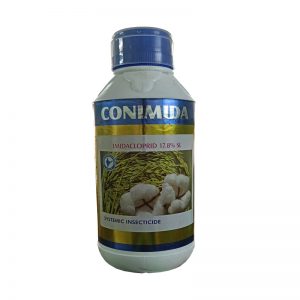
Applications:
Biochemistry Acts as an antagonist by binding to postsynaptic nicotinic receptors in the insect central nervous system. Mode of action Systemic insecticide with translaminar activity and with contact and stomach action. Readily taken up by the plant and further distributed acropetally, with good root-systemic action. Uses Control of sucking insects, including rice-, leaf- and planthoppers, aphids, thrips and whitefly. Also effective against soil insects, termites and some species of biting insects, such as rice water weevil and Colorado beetle. Has no effect on nematodes and spider mites. Used as a seed dressing, as soil treatment and as foliar treatment in different crops, e.g. rice, cotton, cereals, maize, sugar beet, potatoes, vegetables, citrus fruit, pome fruit and stone fruit. Applied at 25-100 g/ha for foliar application, and 50-175 g/100 kg seed for most seed treatments, and 350-700 g/100 kg cotton seed. Also used to controls fleas in dogs and cats.
Acetamiprid 20%WP
We are engaged in offering excellent quality Prime (Acetamaprid 20% SP) to our valuable clients.
Nomanclature:
Common name acetamiprid (pa ISO)
IUPAC name (E)-N1-[(6-chloro-3-pyridyl)methyl]-N2-cyano-N1-methylacetamidine
Chemical Abstracts name (E)-N-[(6-chloro-3-pyridinyl)methyl]-N’-cyano-N-methylethanimidamide
CAS RN [135410-20-7]; [160430-64-8] unspecified stereochemistry Development codes NI-25 (Nippon Soda); EXP60707B
Physical Chamestry:
Mol. wt. 222.7 M.f. C10H11ClN4 Form Colourless crystals. M.p. 98.9 °C V.p.
Applications:
Mode of action Systemic insecticide with translaminar activity and with contact and stomach action. Uses Control of Hemiptera, especially aphids, Thysanoptera and Lepidoptera, by soil and foliar application, on a wide range of crops, especially vegetables, fruit and tea. Applied at 75-300 g/ha on vegetables, 100-700 g/ha in orchards. Formulation types FU; GR; EC; WP
Acephate 75% SP
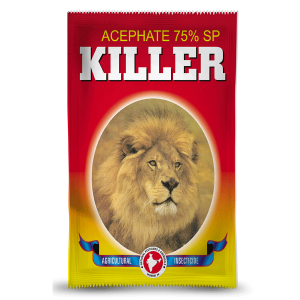
Nomenclatur:
Common name acephate (BSI, E-ISO, (m) F-ISO, ANSI, ESA, JMAF)
IUPAC name O,S-dimethyl acetylphosphoramidothioate
Chemical Abstracts name N-[methoxy(methylthio)phosphinoyl]acetamide
CAS RN [30560-19-1] EEC no. 250-241-2 Development codes Ortho 12 420 (Chevron) Official codes ENT 27 822
Physical Chemestry:
Composition Tech. grade is >97% pure. Mol. wt. 183.2 M.f. C4H10NO3PS Form Colourless crystals; (tech., a colourless solid). M.p. 88-90 ºC; (tech., 82-89 ºC) V.p. 0.226 mPa (24 ºC) KOW logP = -0.89 S.g./density 1.35 Solubility In water 790 g/l (20 ºC). In acetone 151, ethanol >100, ethyl acetate 35, benzene 16, hexane 0.1 (all in g/l, 20 ºC). Stability Hydrolysis DT50 50 d (pH 5-7, 21 °C), photodegradation DT50 (l = 253.7 nm) 55 h.
Applications:
Biochemistry Cholinesterase inhibitor. Mode of action Systemic insecticide. Uses Control of a wide range of chewing and sucking insects, e.g. aphids, thrips, lepidopterous larvae, sawflies, leaf miners, leafhoppers, cutworms, etc., at 0.5-1.0 kg/ha, in fruit (including citrus), vines, hops, olives, cotton, soya beans, peanuts, macadamia nuts, beet, brassicas, celery, beans, potatoes, rice, ornamentals, forestry, and other crops. Of moderate persistence, with residual activity lasting c. 10-21 d.
Monocrotophose 36% SL
Nomanclature:
Common name monocrotophos (BSI, E-ISO, (m) F-ISO, ESA, JMAF)
IUPAC name dimethyl (E)-1-methyl-2-(methylcarbamoyl)vinyl phosphate; 3-dimethoxyphosphinoyloxy-N-methylisocrotonamide
Chemical Abstracts name (E)-dimethyl 1-methyl-3-(methylamino)-3-oxo-1-propenyl phosphate
CAS RN [6923-22-4] (formerly [919-44-8]) monocrotophos; [919-44-8] (Z)- analogue; [2157-98-4] (E)- + (Z)- compounds EEC no. 230-042-7 Development codes C 1414 (Ciba); SD 9129 (Shell) Official codes OMS 834; ENT 27 129
Physical Chemestry:
Mol. wt. 223.2 M.f. C7H14NO5P Form Colourless, hygroscopic crystals; (tech., ³74%: dark brown semi-solid). M.p. 54-55 ºC B.p. 125 ºC/0.0005 mmHg V.p. 2.9 ´ 10-1 mPa (20 ºC); 9.8 ´ 10-1 mPa (separate studies) KOW logP = -0.22 (calc.) S.g./density 1.22 kg/l (20 ºC). Solubility In water 100% (20 ºC). In methanol 100%, acetone 70%, n-octanol 25%, toluene 6% (all 20 ºC). Sparingly soluble in kerosene and diesel oil.
Cloropyriphose 20% EC
Nomanclature:
Common name chlorpyrifos (BSI, E-ISO, ANSI, ESA, BAN); chlorpyriphos ((m) F-ISO, JMAF); chlorpyriphos-éthyl ((m) France)
IUPAC name O,O-diethyl O-3,5,6-trichloro-2-pyridyl phosphorothioate
Chemical Abstracts name O,O-diethyl O-(3,5,6-trichloro-2-pyridinyl) phosphorothioate
CAS RN [2921-88-2] EEC no. 220-864-4 Development codes Dowco 179 (Dow) Official codes OMS 971; ENT 27 311
Physical Chemestry:
Mol. wt. 350.6 M.f. C9H11Cl3NO3PS Form Colourless crystals, with a mild mercaptan odour. M.p. 42-43.5 ºC V.p. 2.7 mPa (25 ºC) KOW logP = 4.7 Henry 6.76 ´ 10-1 Pa m3 mol-1 (calc.) S.g./density 1.44 (20 °C) Solubility In water c. 1.4 mg/l (25 ºC). In benzene 7900, acetone 6500, chloroform 6300, carbon disulfide 5900, diethyl ether 5100, xylene 5000, iso-octanol 790, methanol 450 (all in g/kg, 25 ºC). Stability Rate of hydrolysis increases with pH, and in the presence of copper and possibly of other metals that can form chelates; DT50 1.5 d (water, pH 8, 25 ºC) to 100 d (phosphate buffer, pH 7, 15 ºC).
Applications:
Biochemistry Cholinesterase inhibitor.
Mode of action : Non-systemic insecticide with contact, stomach, and respiratory action.
Quinalphose 25% EC
Nomanclature:
Common name quinalphos (BSI, E-ISO, (m) F-ISO); chinalphos ((m) France)
IUPAC name O,O-diethyl O-quinoxalin-2-yl phosphorothioate
Chemical Abstracts name O,O-diethyl O-2-quinoxalinyl phosphorothioate
CAS RN [13593-03-8] EEC no. 237-031-6 Development codes Bay 77 049 (Bayer); SAN 6538; SAN 6626 (both Sandoz) Official codes ENT 27 394
Physical Chemestry:
Mol. wt. 298.3 M.f. C12H15N2O3PS Form Colourless crystals. M.p. 31-32 ºC B.p. 142 ºC/0.0003 mmHg (decomp.) V.p. 0.346 mPa (20 ºC) KOW logP = 4.44 (23 ºC, 10-100 ppm level) S.g./density 1.235 (20 ºC) Solubility In water 17.8 mg/l (22-23 ºC). In hexane 250 g/l (23 ºC). Readily soluble in toluene, xylene, diethyl ether, ethyl acetate, acetone, acetonitrile, methanol, ethanol. Slightly soluble in petroleum ether (23 °C). Stability A.i. stable 14 d at room temperature; liquid tech. grade less stable but stable under ambient storage conditions, when diluted in non-polar organic solvents and in the presence of stabilising agents. Formulations are stable (shelf life at ave. ann. temp. £25 ºC c. 2 y). Susceptible to hydrolysis; DT50 (25 ºC, 17 ppm and 2.5 ppm) 23 d (pH 3), 39 d (pH 6), 26 d (pH 9).
Applications:
Biochemistry Cholinesterase inhibitor. Mode of action Insecticide and acaricide with contact and stomach action. By penetrating the plant tissues through translaminar action, exhibits a systemic effect.
Quinalphose 20% + cyper 5%
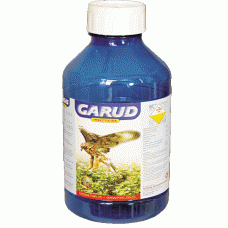
f Cotton and Shoot and fruit borer
Applications:
Mode of action Non-systemic insecticide with contact and stomach action. Acts on the central and peripheral nervous system in very low doses. Uses Control of a wide range of chewing and sucking insects (particularly Lepidoptera, Coleoptera, and Hemiptera) in fruit (including citrus), vegetables, vines, cereals, maize, beet, oilseed rape, potatoes, cotton, rice, soya beans, forestry, and other crops. Control of cockroaches, mosquitoes, flies, and other insect pests in public health; and flies in animal houses. Also used as an animal ectoparasiticide.
Alphamethrin 10% EC
Nomanclature:
Common name alpha-cypermethrin (BSI, draft E-ISO); alpha-cyperméthrine ((f) draft F-ISO)
IUPAC name A racemate comprising (S)-a-cyano-3-phenoxybenzyl (1R,3R)-3-(2,2-dichlorovinyl)-2,2-dimethylcyclopropanecarboxylate and (R)-a-cyano-3-phenoxybenzyl (1S,3S)-3-(2,2-dichlorovinyl)-2,2-dimethylcyclopropanecarboxylate
Roth: A racemate comprising (S)-a-cyano-3-phenoxybenzyl (1R)-cis-3-(2,2-dichlorovinyl)-2,2-dimethylcyclopropanecarboxylate and (R)-a-cyano-3-phenoxybenzyl (1S)-cis-3-(2,2-dichlorovinyl)-2,2-dimethylcyclopropanecarboxylate
Chemical Abstracts name [1a(S*),3a]-(±)-cyano(3-phenoxyphenyl)methyl 3-(2,2-dichloroethenyl)-2,2-dimethylcyclopropanecarboxylate
Other names alfoxylate*; alphamethrin* (rejected common name proposals) CAS RN [67375-30-8] correct stereochemistry; [52315-07-8] (formerly [86752-99-0], [86753-92-6]) cypermethrin (no stereochemistry stated) were sometimes used in Chemical Abstracts Development codes WL 85871 (Shell); FMC 63318; FMC 39391 Official codes OMS 3004
Physical Chemestry:
Composition Tech. grade alpha-cypermethrin is >90% pure m/m, typically >95%. Mol. wt. 416.3 M.f. C22H19Cl2NO3 Form Colourless crystals; (tech. is a white to pale powder, with a weak aromatic odour). M.p. 78-81 ºC B.p. 200 ºC/9.3 Pa V.p. 2.3 ´ 10-2 mPa (20 ºC) KOW logP = 6.94 (pH 7) Henry 6.9 ´ 10-2 Pa m3 mol-1 (calc.)
Cypermethrin 10% EC
Applications:
Cypermethrin is a synthetic pyrethroid used as an insecticide in large-scale commercial agricultural applications as well as in consumer products for domestic purposes. It behaves as a fast-acting neurotoxin in insects. It is easily degraded on soil and plants but can be effective for weeks when applied to indoor inert surfaces. Exposure to sunlight, water and oxygen will accelerate its decomposition.
Cypermethrin belongs to Pyrethriod ester group of insecticides.
Cypermethrin controls the insects by its contact and stomach poison action.
Cypermethrin is very effective in controlling the insects immediately after application even at lower doses.
Cypermethrin does not leave residue in the crops and due to this quality it can be applied a week before the harvest of the crop.
Cypermethrin 25 % EC
Applications:
Cypermethrin is a synthetic pyrethroid used as an insecticide in large-scale commercial agricultural applications as well as in consumer products for domestic purposes. It behaves as a fast-acting neurotoxin in insects. It is easily degraded on soil and plants but can be effective for weeks when applied to indoor inert surfaces. Exposure to sunlight, water and oxygen will accelerate its decomposition.
Cypermethrin belongs to Pyrethriod ester group of insecticides.
Cypermethrin controls the insects by its contact and stomach poison action.
Cypermethrin is very effective in controlling the insects immediately after application even at lower doses.
Cypermethrin does not leave residue in the crops and due to this quality it can be applied a week before the harvest of the crop.
Read more ….
Profenophos 50% EC
Nomanclature:
Common name profenofos (BSI, E-ISO, (m) F-ISO, ANSI, ESA)
IUPAC name O-4-bromo-2-chlorophenyl O-ethyl S-propyl phosphorothioate
Chemical Abstracts name O-(4-bromo-2-chlorophenyl) O-ethyl S-propyl phosphorothioate
CAS RN [41198-08-7] EEC no. 255-255-2 Development codes CGA 15 324 (Ciba-Geigy) Official codes OMS 2004
Physical Chemistry:
Composition Tech. is ³98%. Mol. wt. 373.6 M.f. C11H15BrClO3PS Form Pale yellow liquid, with a garlic-like odour. B.p. 100 ºC/1.80 Pa V.p. 1.24 ´ 10-1 mPa (25 ºC) (OECD 104) KOW logP = 4.44 (OECD 107). Henry 1.65 ´ 10-3 Pa m3 mol-1 (calc.) S.g./density 1.455 (20 ºC) (OECD 109) Solubility In water 28 mg/l (25 ºC). Readily miscible with most organic solvents. Stability Relatively stable under neutral and slightly acidic conditions. Unstable under alkaline conditions; on hydrolysis, DT50 (calc.) (20 ºC) 93 d (pH 5), 14.6 d (pH 7), 5.7 h (pH 9). pKa No dissociation constant between pKa 0.6 to 12 F.p. 124 °C (EEC A9)
Applications:
Biochemistry Cholinesterase inhibitor. The separate optical isomers, due to the chiral phosphorus atom, show different types of insecticidal activity and ability to inhibit acetylcholinesterase (H. Leader & J. E. Casida, J. Agric. Food Chem., 1982, 30, 546). Mode of action Non-systemic insecticide and acaricide with contact and stomach action.
Profeno 40% Cyper 4%
Nomanclature:
Common name profenofos (BSI, E-ISO, (m) F-ISO, ANSI, ESA)
IUPAC name O-4-bromo-2-chlorophenyl O-ethyl S-propyl phosphorothioate
Chemical Abstracts name O-(4-bromo-2-chlorophenyl) O-ethyl S-propyl phosphorothioate
CAS RN [41198-08-7] EEC no. 255-255-2 Development codes CGA 15 324 (Ciba-Geigy) Official codes OMS 2004
Physical chemistry:
Composition Tech. is ³98%. Mol. wt. 373.6 M.f. C11H15BrClO3PS Form Pale yellow liquid, with a garlic-like odour. B.p. 100 ºC/1.80 Pa V.p. 1.24 ´ 10-1 mPa (25 ºC) (OECD 104) KOW logP = 4.44 (OECD 107). Henry 1.65 ´ 10-3 Pa m3 mol-1 (calc.) S.g./density 1.455 (20 ºC) (OECD 109) Solubility In water 28 mg/l (25 ºC). Readily miscible with most organic solvents. Stability Relatively stable under neutral and slightly acidic conditions. Unstable under alkaline conditions; on hydrolysis, DT50 (calc.) (20 ºC) 93 d (pH 5), 14.6 d (pH 7), 5.7 h (pH 9). pKa No dissociation constant
between pKa 0.6 to 12 F.p. 124 °C (EEC A9)
Applications:
Biochemistry Cholinesterase inhibitor. The separate optical isomers, due to the chiral phosphorus atom, show different types of insecticidal activity and ability to inhibit acetylcholinesterase (H. Leader & J. E. Casida, J. Agric. Food Chem., 1982, 30, 546). Mode of action Non-systemic insecticide and acaricide with contact and stomach action.
Dichlorovos 76% EC
IUPAC name 2,2-dichlorovinyl dimethyl phosphate
Chemical Abstracts name 2,2-dichloroethenyl dimethyl phosphate
CAS RN [62-73-7] EEC no. 200-547-7 Development codes Bayer 19 149; C 177 (Ciba) Official codes OMS 14; ENT 20 738Physical chemistry:
Mol. wt. 221.0 M.f. C4H7Cl2O4P Form Colourless liquid; (tech., colourless-to-amber liquid, with an aromatic odour). B.p. 234.1 ºC/1 ´ 105 Pa (OECD 103); 74 °C/1.3 ´ 102 Pa V.p. 2.1 ´ 103 mPa (25 ºC) (OECD 104) KOW logP = 1.9 (OECD 117); 1.42 (separate study) Henry 2.58 ´ 10-2 Pa m3 mol-1 S.g./density 1.425 (20 ºC) (OECD 109) Solubility In water c. 18 g/l (25 ºC). Slowly hydrolysed in water and in acidic media, and rapidly hydrolysed by alkalis, to dimethyl hydrogen phosphate and dichloroacetaldehyde; DT50 (est.) 31.9 d (pH 4), 2.9 d (pH 7), 2.0 d (pH 9) (22 ºC). F.p. >100 °C (DIN 51758); 172 °C (Pensky-Martens closed cup, 1 ´ 105 Pa)Applications:
Biochemistry Cholinesterase inhibitor. Mode of action Insecticide and acaricide with respiratory.
Triazophos40% EC
Nomanclature:
Common name triazophos (BSI, E-ISO, (m) F-ISO)
IUPAC name O,O-diethyl O-1-phenyl-1H-1,2,4-triazol-3-yl phosphorothioate
Chemical Abstracts name O,O-diethyl O-(1-phenyl-1H-1,2,4-triazol-3-yl) phosphorothioate
CAS RN [24017-47-8] EEC no. 245-986-5 Development codes Hoe 002960 (Hoechst); AE F002960 (AgrEvo)
Physical Chemistry :
Composition Tech. grade is ³92% pure. Mol. wt. 313.3 M.f. C12H16N3O3PS Form Light yellow to dark brown liquid, with a typical phosphate ester odour. M.p. 0-5 ºC B.p. Exothermic decomposition above 140 °C V.p. 0.39 mPa (30 ºC); 13 mPa (55 ºC) KOW logP = 3.34 S.g./density 1.24 (20 ºC) Solubility In water 39 mg/l (pH 7, 20 °C). In acetone, dichloromethane, methanol, isopropanol, ethyl acetate and polyethyleneglycols >500, n-hexane 11.1 (all in g/l, 20 °C). Stability Stable to light. Hydrolysed by aqueous acids and alkalis. F.p. Cannot be determined; exothermic decomposition above 140 °C
Applications:
Biochemistry Cholinesterase inhibitor. Mode of action Broad-spectrum insecticide and acaricide with contact and stomach action. Non-systemic, but penetrates deeply into plant tissues. Uses Control of aphids, thrips, midges, beetles, lepidopterous larvae, cutworms and other soil insects, spider mites and other species of mite, etc. in ornamentals, fruit trees (including citrus – 0.03%-0.1%), vines, bananas, strawberries.
Triazo 35% Delta 1%
Azardirectin 300 ppm
Neem oil is a vegetable oil pressed from the fruits and seeds of the neem (Azadirachta indica), an evergreen tree which is endemic to the Indian subcontinent and has been introduced to many other areas in the tropics. It is the most important of the commercially available products of neem for organic farming and medicines.
Neem oil varies in color; it can be golden yellow, yellowish brown, reddish brown, dark brown, greenish brown, or bright red. It has a rather strong odor that is said to combine the odours of peanut and garlic. It is composed mainly of triglycerides and contains many triterpenoid compounds, which are responsible for the bitter taste. It is hydrophobic in nature; in order to emulsify it in water for application purposes, it is formulated with surfactants.
Azadirachtin is the most well known and studied triterpenoid in neem oil. The azadirachtin content of neem oil varies from 300ppm to over 2500ppm depending on the extraction technology and quality of the neem seeds crushed. Nimbin is another triterpenoid which has been credited with some of neem oil’s properties as an antiseptic, antifungal, antipyretic and antihistamine.[1] Neem oil also contains several sterols, including (campesterol, beta-sitosterol, stigmasterol).
Azardirectin 1500 ppm
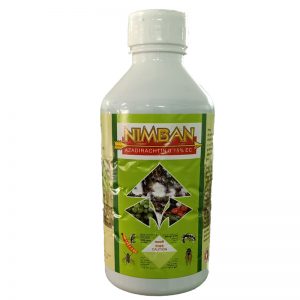
Physical Chemistry:
colour : brown liquid
odour : characteristic neem odour
ph : 6.5 â±0.02
specific gravity : 0.98
solubility : emulsifiable in water
acidity : 150â°c
Mode of action :
Repellent,antifeedant,growth regulator,oviposition deterrent,ovicide
fitness reducer, reproduction suppressor
crop segments
vegetables, fruits, home gardens, lawns, greenhouses, indoors, ornamentals, commercial crops, plantation crops.
Target Pests:
caterpillars, beetles, aphids, leafminers, thrips, mites, grasshoppers, whiteflies, leafhoppers, etc.
dose recommendations
900 â 1000 ml / 100 litres
Application recommendations:
1. apply as soon as pests are observed for better results.
2. apply during immature pest stages for greater control.
3. under high pest incidence, use product at short intervals
4. spray followed by a chemical application in case of serious pest outbreak in non organic crops.
5. the formulation can be alternated with chemicals / biologicals if required.
6. use the product in overall pest control program to make pests weak and make it more susceptible to insecticides.
7. use the product to prevent insecticide resistance.
8. thoroughly cover foliage or apply upto run off conditions.
9. sprays during morning or evening hours maximise bioefficacy.
Malathion 50% EC
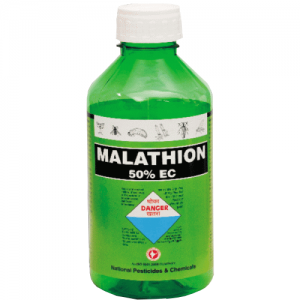
Malathion :Malathion 50 EC Insecticide
Product description:
NOMENCLATURE:-
Common name malathion (BSI, E-ISO, (m) F-ISO, ESA, BAN); maldison (Australia, New Zealand); malathon (JMAF); mercaptothion (South Africa); carbofos (USSR); no name (Germany); mercaptotion (Argentina) IUPAC name diethyl (dimethoxythiophosphorylthio)succinate; S-1,2-bis(ethoxycarbonyl)ethyl O,O-dimethyl
Phosphorodithioate
Chemical Abstracts name diethyl [(dimethoxyphosphinothioyl)thio]butanedioate CAS RN [121-75-5] EEC no. 204-497-7 Development codes EI 4049 (Cyanamid) Official codes OMS 1; ENT 17 034
PHYSICAL CHEMISTRY:-
Composition Tech. grade is c. 95% pure. Mol. wt. 330.4 M.f. C10H19O6PS2 Form Tech. is a clear, amber liquid. M.p. 2.85 ºC B.p. 156-157 ºC/0.7 mmHg. V.p. 5.3 mPa (30 ºC) KOW logP = 2.75 Henry 1.21 ´ 10-2 Pa m3 mol-1 (calc.) S.g./density 1.23 (25 ºC) Solubility In water 145 mg/l (25 ºC). Miscible with most organic solvents, e.g. esters, ketones, ethers, aromatic hydrocarbons. Slightly soluble in petroleum ether and some types of mineral oil. Stability Relatively stable in neutral, aqueous media. Decomposed by strong acids and by alkali; hydrolysis DT50 107 d (pH 5), 6 d (pH 7), 0.5 d (pH 9) (all 25 °C); F.p. 163 °C (Pensky-Martens closed cup)
Read more ….
Lamdacyhalothrin 2.5 % EC
Fenvalerate 20 EC is a non-systemic insecticide and acaricide with contact and stomach action. It control of a wide range of pests, including control of chewing, sucking and boring insects, in fruit, vines, olives, hops, nuts, vegetables, cucurbits, cotton, sunflowers, cereals, maze, sorghum, potatoes, beet, peanuts, soya beans, tobacco, sugar cane, ornamental, forestry and on non-crop land. Fenvalerate 20 EC, is used to control insects on an extensive variety of leaves and fruits and food and cotton production; also used for the control of flies and ticks in barns and stables.
Fenvarlate 20% EC
Acephate 25% + fenvarlate 3%
Acephate 25% + Fenvalerate 3% EC recommended for the control of sucking insects on cotton.
Fipronil 5% WP
250 – 300 ml per acre
Benefit : Result is highly effective broad spectrum insecticide.
Result is mainly effective for Thrips , stem borer , root borer etc.
Result is also effective for termite control.
Packing
250 ml, 500 ml, 1 lit.
Deltamethrin 2.5% WP
Judo Karate – Imidacloprid 6% + Labdacyhalothrin 4% SL
Imidacloripid 6% + Lambda cyhalothrin 4% SL is a systemic and contact insecticide containing 6% Imidacloripid and 4% Lambda cyhalothrin active ingredient along with adjuvant. It is recommended for control of stem borer, hipsa, plant hopper and gundhi bug in paddy crop at the rate of 300ml formulation per hectare in 500 liters water with a minimum per harvest interval (phi) of 10 days.
Mithion 505 – Ethion 50% EC (Insecticide)
Target Crop: It is used for crops like Tea, Cotton, Maize, Cucurbits, Citrus, Stone Fruits, Pome fruits, Vines, Ornamental etc.
Target Pests: It is effectively used for Pink Bollworms, American bollworm, Spotted bollworm, .Bollworms, like Aphids, Thrips, Scales, Pink mite, Purple Mite, Scarlet Mites, Red Spider Mites, Leaf hopper, Caterpillars and Heliothis etc.
Mighty 605 – Ethion 40% + Cypermethrin 5 % EC (Insecticide)
It is highly effective against all types of bollworms on cotton and leaf eating and fruit boring caterpillars in a wide range of crops like vegetables, pulses etc. It is also effective against whiteflies on cotton and vegetables.


